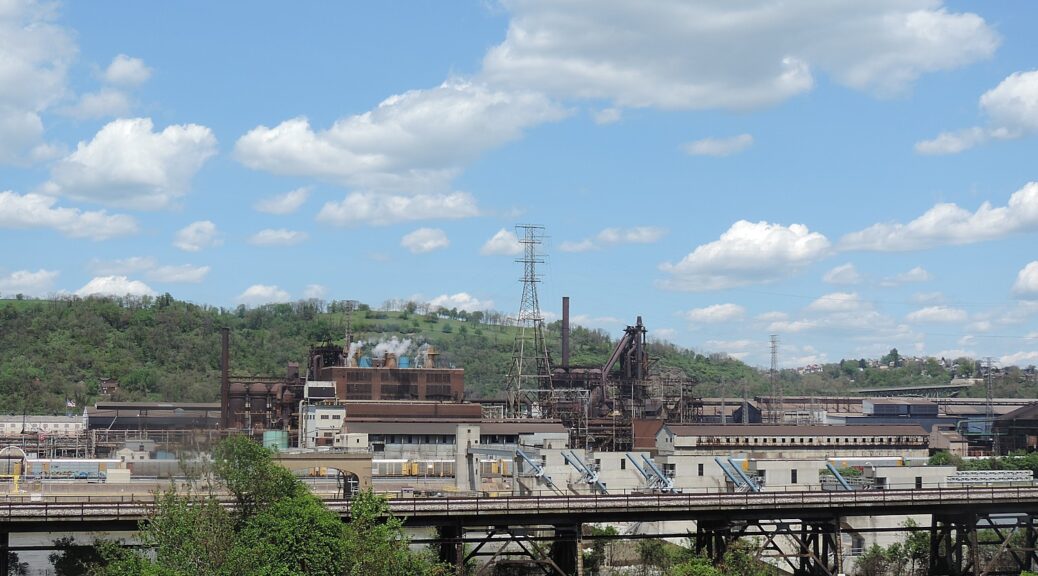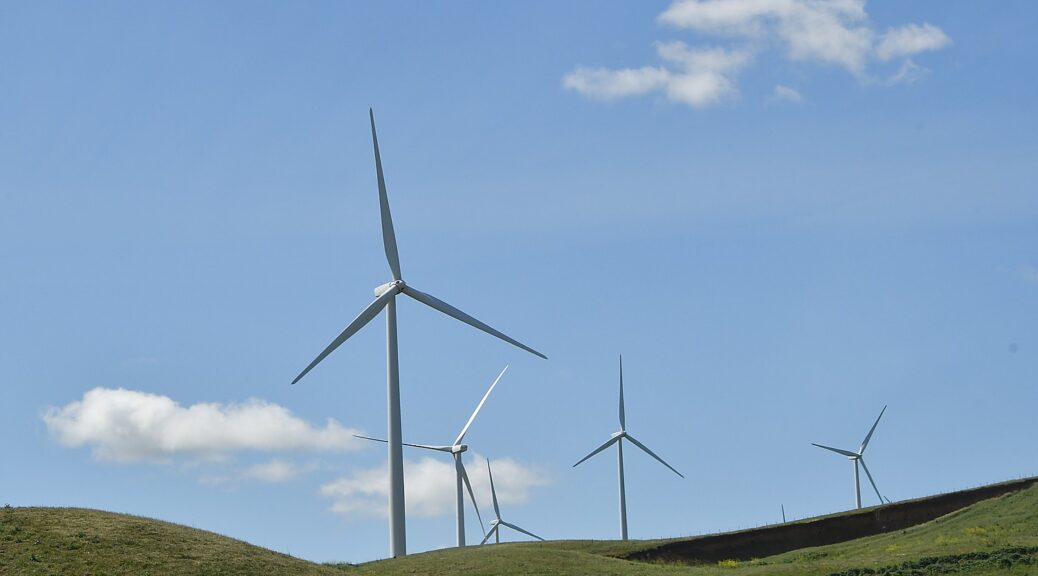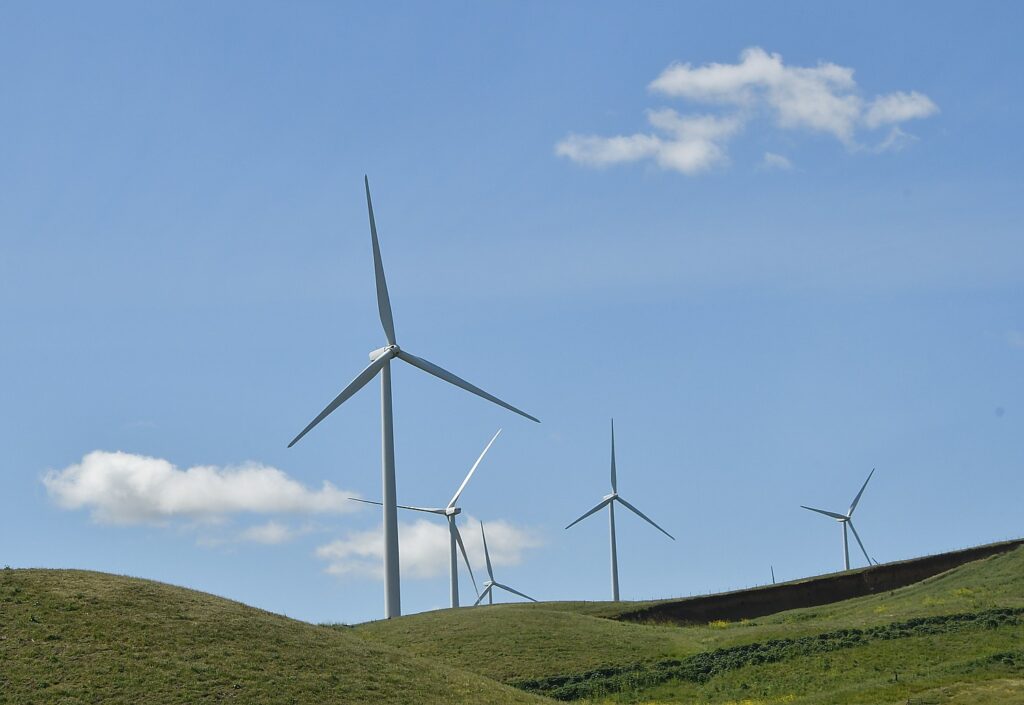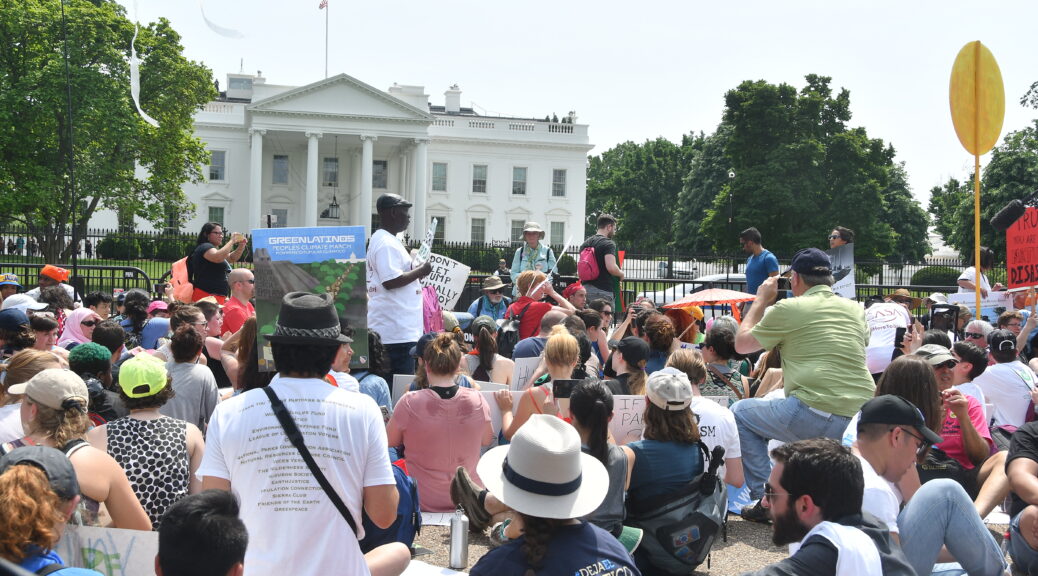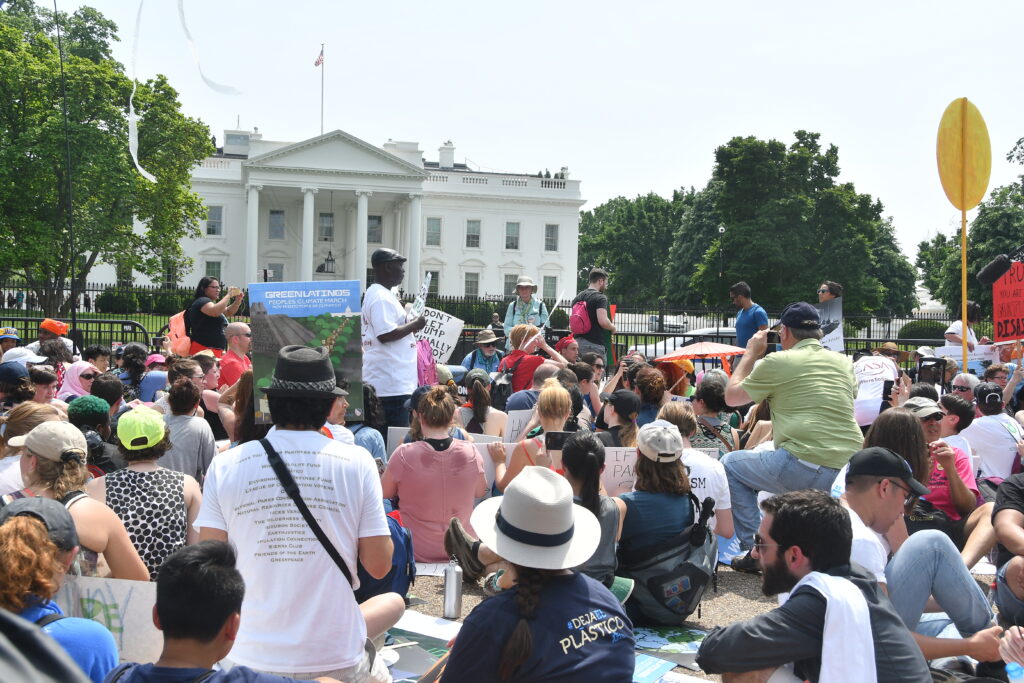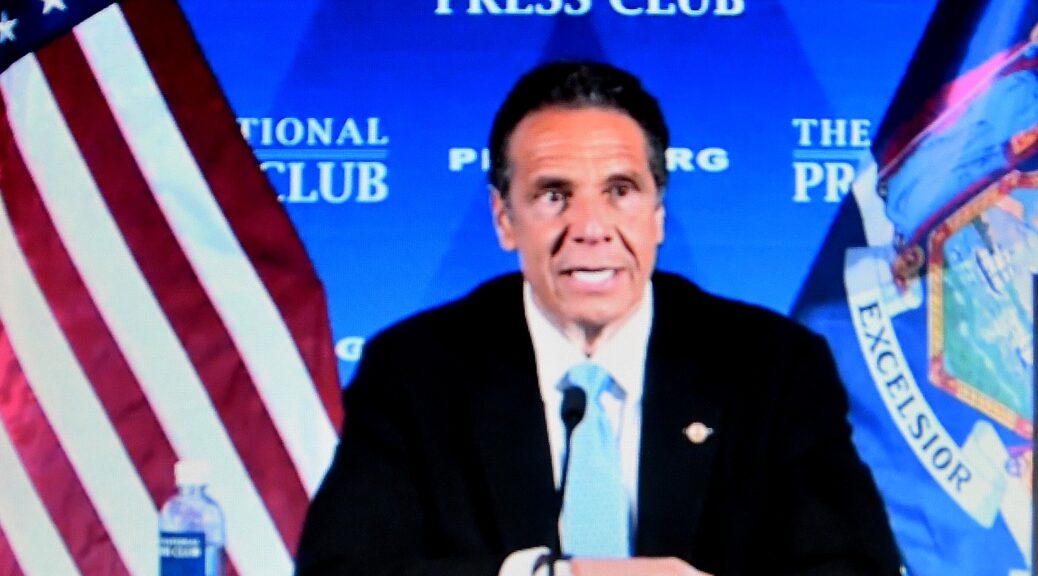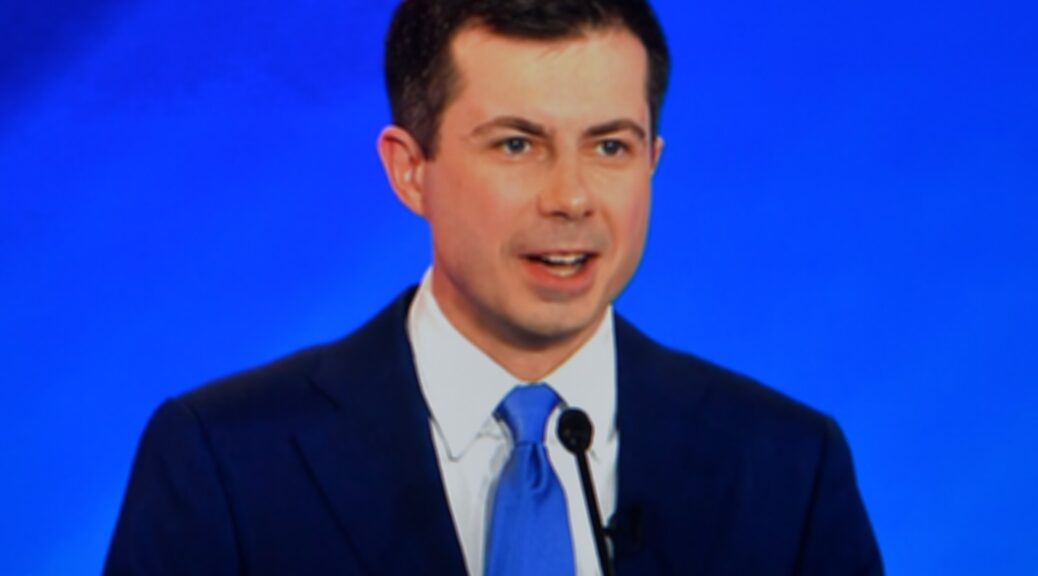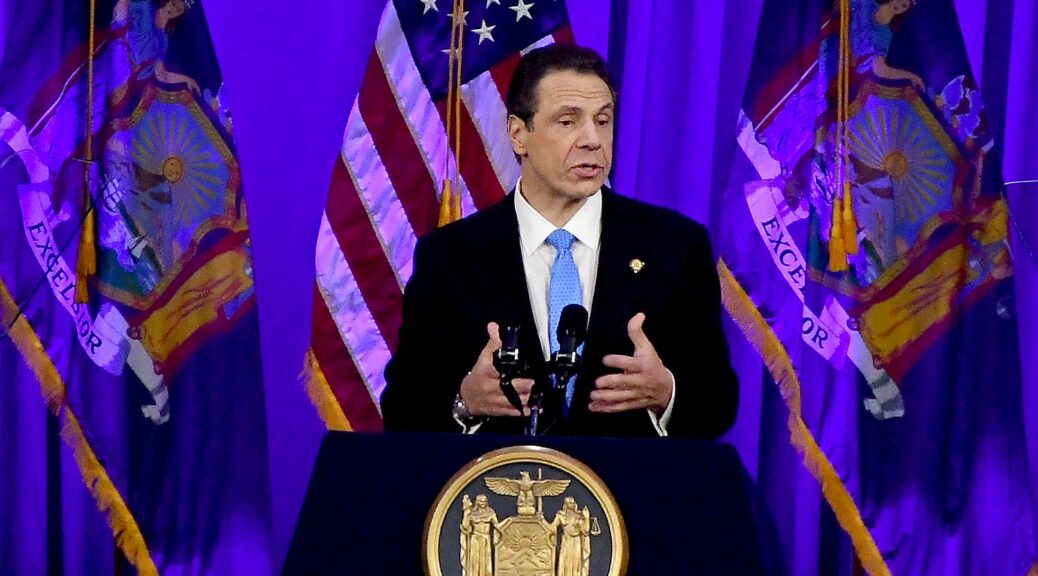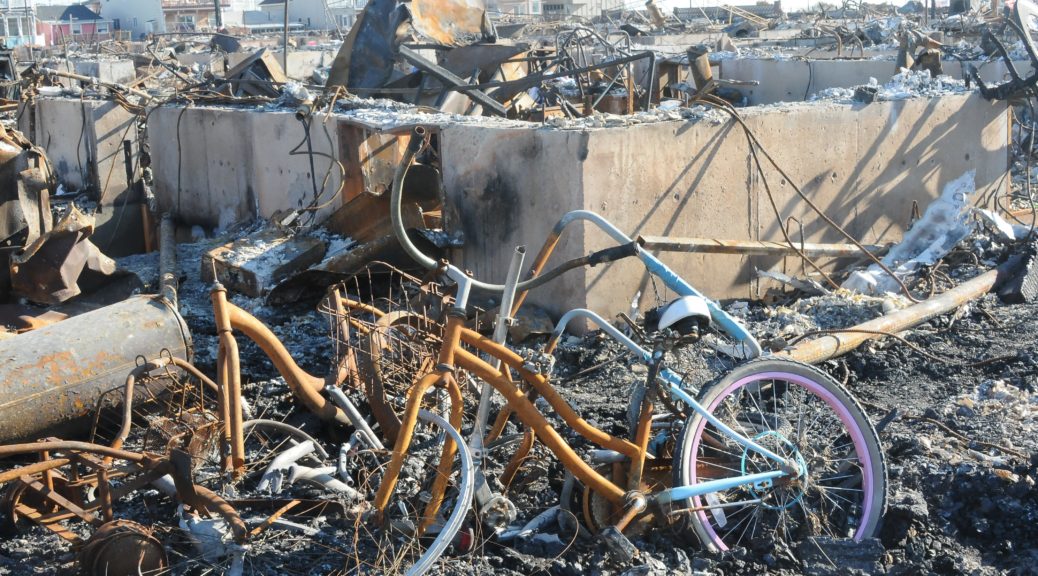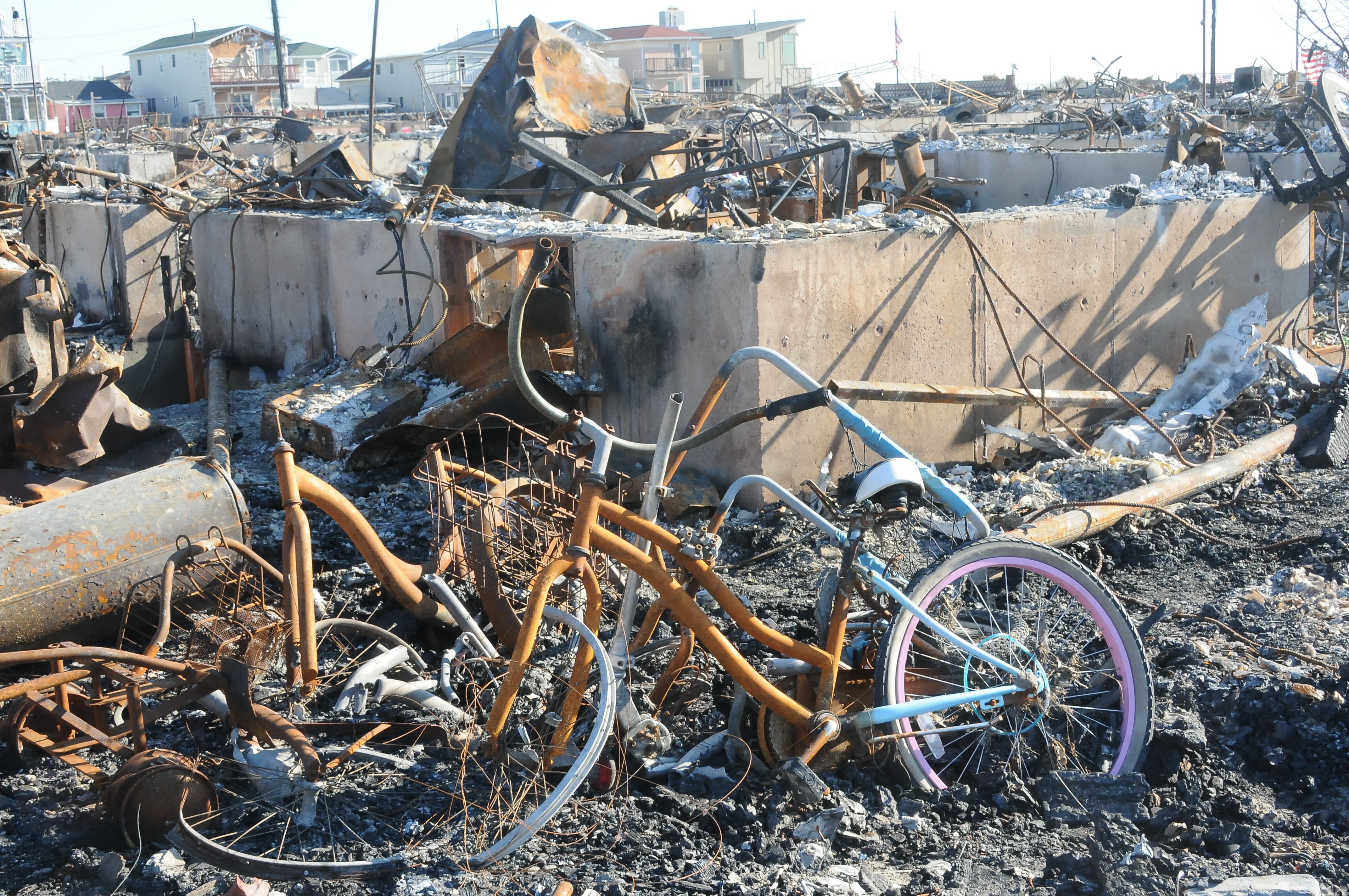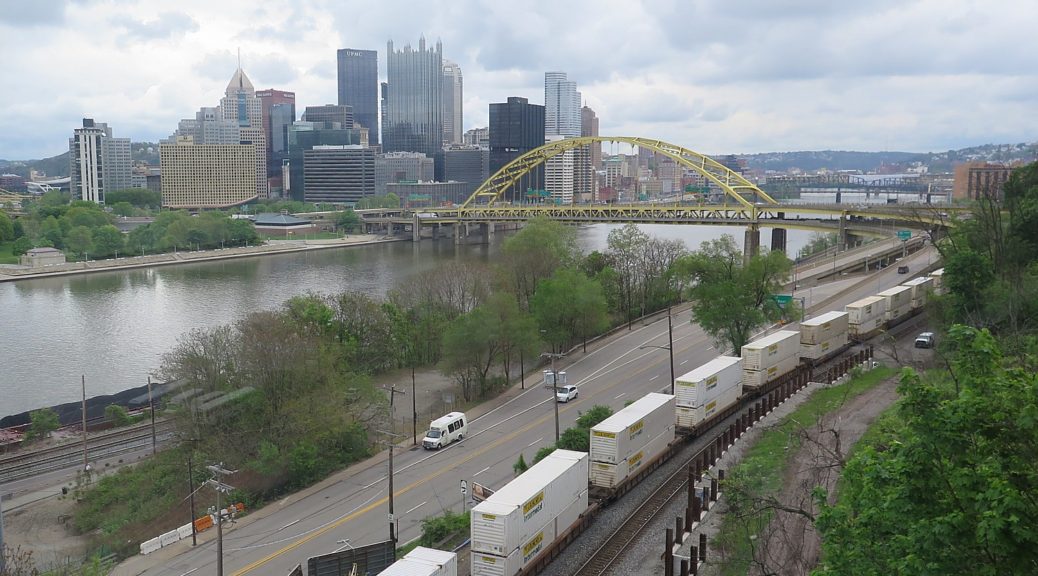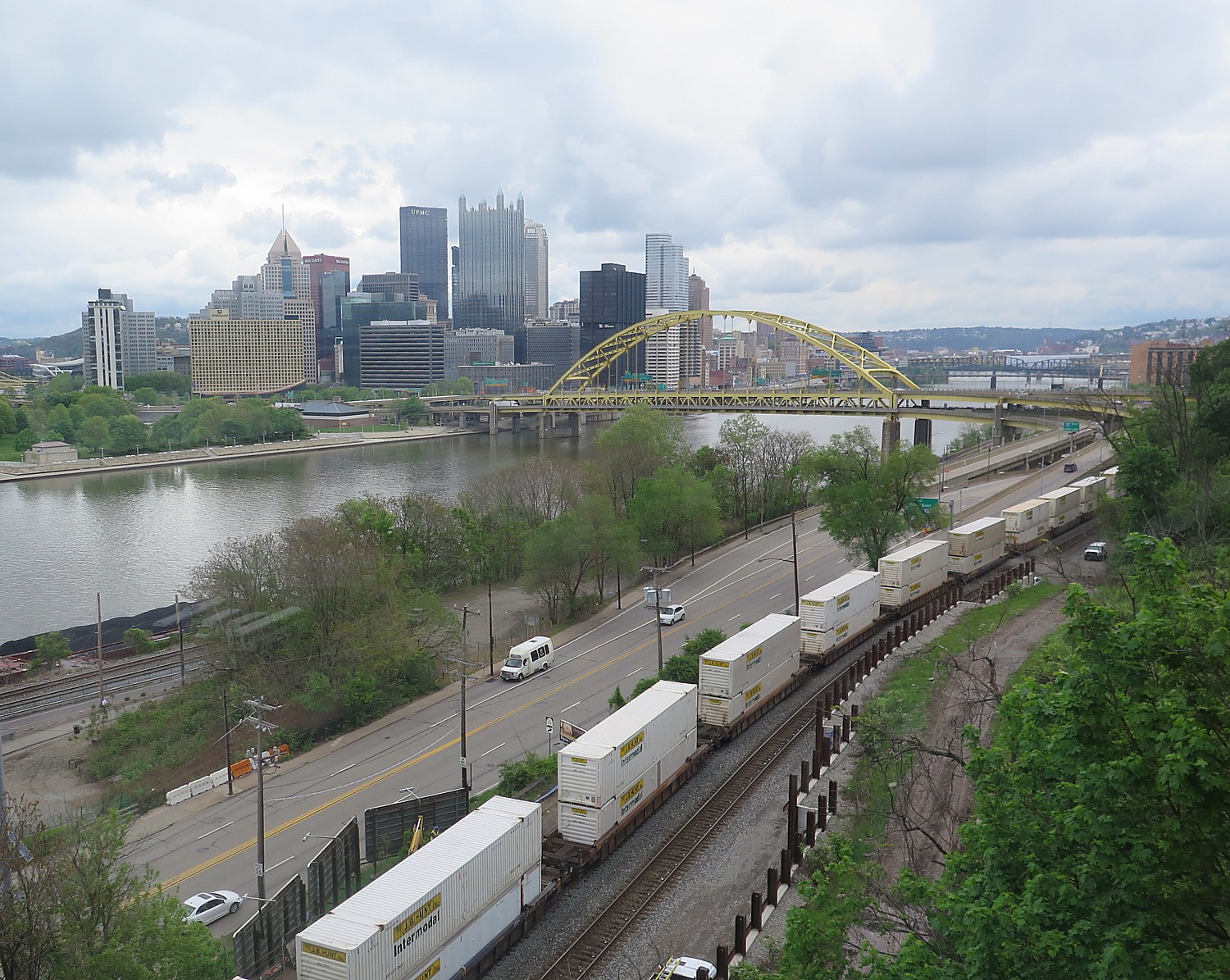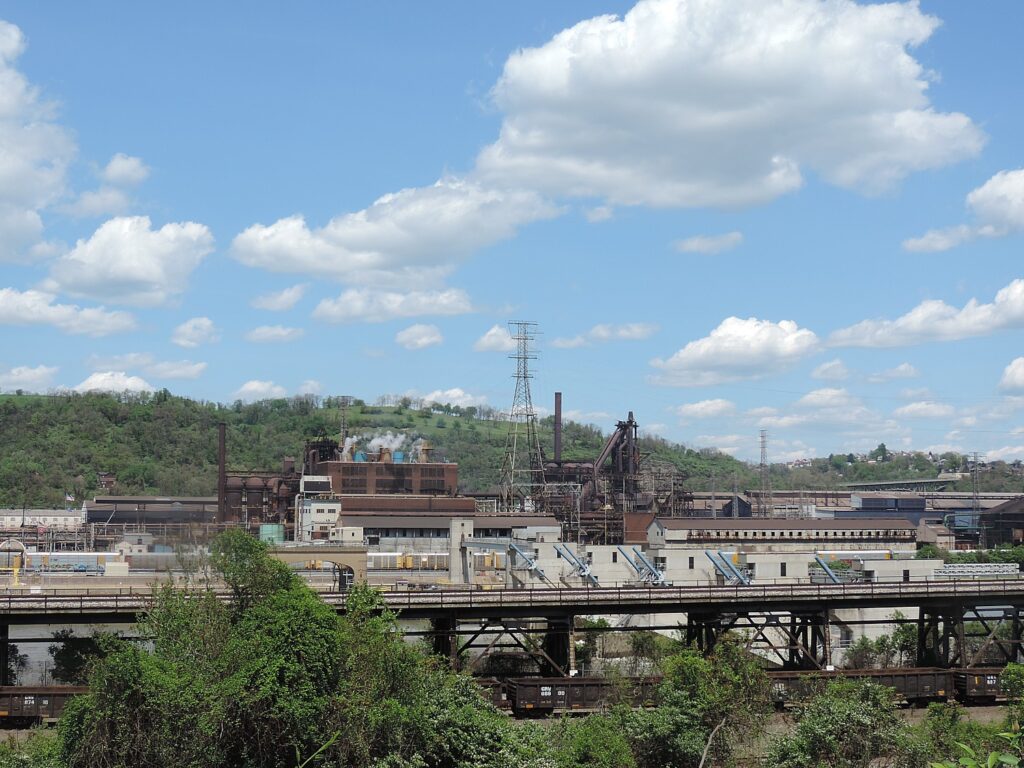
President Joe Biden introduced his American Jobs Plan – an ambitious $2 trillion infrastructure plan – saying “Is it big? Yes. Is it bold? Yes. And we can get it done.” In fact, he declared, “we must,” and laid out a cogent argument for “the largest American jobs investment since World War Two.”
“We have to move now,” Biden declared. “Because I’m convinced that if we act now, in 50 years, people are going to look back and say this was the moment that America won the future.”
Here is an edited transcript of the speech he delivered on March 31, at Carpenters Pittsburgh Training Center, Pittsburgh, Pennsylvania, in which he introduced his plan to the nation:
It’s the largest American jobs investment since World War Two. It will create millions of jobs, good-paying jobs. It will grow the economy, make us more competitive around the world, promote our national security interests, and put us in a position to win the global competition with China in the upcoming years.
Is it big? Yes. Is it bold? Yes. And we can get it done.
It grows the economy in key ways. It puts people to work to repair and upgrade so — that we badly need. It makes it easier and more efficient to move goods, to get to work, and to make us more competitive around the world.
It’s about infrastructure. The American Jobs Plan will modernize 20,000 miles of highways, roads, and main streets that are in difficult, difficult shape right now. It’ll fix the nation’s 10 most economically significant bridges in America that require replacement.
We’ll also repair 10,000 bridges, desperately needed upgrades to unclog traffic, keep people safe, and connect our cities, towns, and Tribes across the country.
The American Jobs Plan will build new rail corridors and transit lines, easing congestion, cutting pollution, slashing commute times, and opening up investment in communities that can be connected to the cities, and cities to the outskirts, where a lot of jobs are these days. It’ll reduce the bottlenecks of commerce at our ports and our airports.
The American Jobs Plan will lead to a transformational progress in our effort to tackle climate change with American jobs and American ingenuity. It’ll protect our community from billions of dollars of damage from historic super storms, floods, wildfires, droughts, year after year, by making our infrastructure more secure and resilient and seizing incredible opportunities for American workers and American farmers in a clean energy future.
Skilled workers, like one we just heard from, building a nationwide network of 500,000 charging stations, creating good-paying jobs by leading the world in the manufacturing and export of clean electric cars and trucks.
We’re going to provide tax incentives and point-of-sale rebates to help all American families afford clean vehicles of the future. The federal government owns an enormous fleet of vehicles which are going to be transitioned to clean electric vehicles and hydrogen vehicles right here in the United States, by American workers with American products.
When we make all these investments, we’re going to make sure, as the executive order I signed early on, that we buy American. That means investing in American-based companies and American workers. Not a contract will go out, that I control, that will not go to a company that is an American company with American products, all the way down the line, and American workers.
And we’ll buy the goods we need from all of America, communities that have historically been left out of these investments: Black, Latino, Asian American, Native American, rural, small businesses, entrepreneurs across the country.
Look, today, up to 10 million homes in America and more than 400,000 schools and childcare centers have pipes — where they get their water from — pipes that are lead-based pipes, including pipes for drinking water.
The American Jobs Plan will put plumbers and pipefitters to work, replacing 100 percent of the nation’s lead pipes and service lines so every American, every child can turn on a faucet or a fountain and drink clean water.
With each $5,000 investment replacing a line, that can mean up to $22,000 in healthcare costs saved — a chance to protect our children, help them learn and thrive.
We can’t delay. We can’t delay another minute. It’s long past due.
[America invented the internet] but millions of Americans lack access to reliable high-speed Internet, including more than 35 percent of rural America.
It’s a disparity even more pronounced during this pandemic. American Jobs will make sure every single — every single American has access to high quality, affordable, high-speed Internet for businesses, for schools.
Americans pay too much for Internet service. We’re going to drive down the price for families who have service now, and make it easier for families who don’t have affordable service to be able to get it now.
As you saw in Texas and elsewhere, our electric and power — power grids are vulnerable to storms, catastrophic failures, and security lapses, with tragic results.
My American Jobs Plan will put hundreds of thousands of people to work..
We’ll build, upgrade, and weatherize affordable, energy-efficient housing and commercial buildings for millions of Americans.
— line workers, electricians, and laborers — laying thousands of miles of transmission line; building a modern, resilient, and fully clean grid; and capping hundreds of thousands of, literally, orphan oil and gas wells that need to be cleaned up because they’re abandoned — paying the same exact rate that a union man or woman would get having dug that well in the first place.
The American Jobs Plan is going to help in big ways. It’s going to extend access to quality, affordable home or community-based care. Think of expanded vital services like programs for seniors, or think of homecare workers going into homes of seniors and people with disabilities, cooking meals, helping them get around their homes, and helping them be able to live more independently.
For too long, caregivers — who are disproportionately women, and women of color, and immigrants — have been unseen, underpaid, and undervalued.
This plan, along with the American Families Plan, changes that with better wages, benefits, and opportunities for millions of people who will be able to get to work in an economy that works for them.
Decades ago, the United States government used to spend 2 percent of its GDP — its gross domestic product — on research and development. Today, we spend less than 1 percent. I think it’s seven-tenths of 1 percent.
Here’s why that matters: We’re one of only a few major economies in the world whose public investment in research and development as a share of GDP has declined constantly over the last 25 years.
And we’ve fallen back. The rest of the world is closing in and closing in fast.
We can’t allow this to continue. The American Jobs Plan is the biggest increase in our federal non-defense research and development spending on record. It’s going to boost America’s innovative edge in markets where global leadership is up for grabs — markets like battery technology, biotechnology, computer chips, clean energy, the competition with China in particular.
When NASA invented ways to keep food safe for the astronauts, it led to programs that have been used to — for decades to keep food safe in supermarkets. At least 2,000 products and services have been developed and commercialized as a result of American space exploration.
GPS has helped us find each other. Computer chips allow us to see and talk to one another..
Xi Jinping, the leader of China, said, You’ve always said, Mr. President, that you can define America in one word: possibilities.” That’s who we are.
In America, anything is possible. Like what we did with vaccines a decade ago that laid the foundation for COVID-19 vaccines we have today. Like we did when the Interstate Highway System that transformed the way we traveled, lived, worked, and developed.
Along with the American Rescue Plan, the proposal I put forward will create millions of jobs — estimated by some Wall Street outfits: over 18 million jobs over four years; good-paying jobs. It also works to level the playing field, empower workers, and ensure that the new jobs are good jobs that you can raise a family on, and ensure free and fair choice to organize and bargain collectively.
Too often, economic growth and recovery is concentrated on the coast. Too often, investments have failed to meet the needs of marginalized communities left behind.
There is talent, innovation everywhere. And this plan connects that talent through cities, small towns, rural communities; through our businesses and our universities; through our entrepreneurs, union workers all across America.
We have to move now. Because I’m convinced that if we act now, in 50 years, people are going to look back and say this was the moment that America won the future.
What I’m proposing is a one-time capital investment of roughly $2 trillion in America’s future, spread largely over eight years.
It will generate historic job growth, historic economic growth, help businesses to compete internationally, create more revenue as well. They are among the highest-value investments we can make in the nation — investing in our infrastructure.
But put it another way, failing to make these investments adds to our debt and effectively puts our children at a disadvantage relative to our competitors. That’s what crumbling infrastructure does. And our infrastructure is crumbling. We’re ranked 13th in the world.
What’s more, it heightens our vulnerability to our adversaries to compete in ways that they haven’t up to now. And our adversaries are worried about us building this critical infrastructure.
Put simply, these are investments we have to make. We can afford to make them — or, put another way, we can’t afford not to.
So how do we pay for it?
Less than four years ago, as I said, the Congress passed a tax cut of $2 trillion, increasing the national debt $2 trillion. It didn’t meet virtually any of the predictions it would in terms of growing the economy. Overwhelmingly, the benefits of that tax package went to the wealthiest Americans. It even included new investments that would profit by shifting profits and jobs overseas if you’re a corporation. It was bad for American competitiveness, deeply unfair to the middle-class families, and wrong for our future.
So, here’s what I’d do. I start with one rule: No one — let me say it again — no one making under $400,000 will see their federal taxes go up. Period. This is not about penalizing anyone. I have nothing against millionaires and billionaires. I believe American — in American capitalism. I want everyone to do well.
But here’s the deal: Right now, a middle-class couple — a firefighter and a teacher with two kids — making a combined salary of, say, $110-, $120,000 a year pays 22 cents for each additional dollar they earn in federal income tax. But a multinational corporation that builds a factory abroad — brings it home and then sell it — they pay nothing at all. We’re going to raise the corporate tax. It was 35 percent, which is too high. We all agreed, five years ago, it should go down to 28 percent, but they reduced it to 21 percent. We’re going to raise it back to — up to 28 percent.
No one should be able to complain about that. It’s still lower than what that rate was between World War Two and 2017. Just doing that one thing will generate $1 trillion in additional revenue over 15 years.
In 2019, an independent analysis found that are 91 — let me say it again, 91 Fortune 500 companies — the biggest companies in the world, including Amazon — they used various loopholes so they’d pay not a single solitary penny in federal income tax. I don’t want to punish them, but that’s just wrong. That’s just wrong. A fireman and a teacher paying 22 percent? Amazon and 90 other major corporations are paying zero in federal taxes?
I’m going to put an end to that, and here’s how we’ll do it. We’re establishing a global minimum tax for U.S. corporations of 21 percent. We’re going to level the international playing field. That alone will raise $1 trillion over 15 years.
We’ll also eliminate deductions by corporations for offshoring jobs and shifting assets overseas. You do that, you pay a penalty; you don’t get a reward in my plan. And use the savings from that to give companies tax credits to locate manufacturing here — in manufacturing and production here in the United States.
And we’ll significantly ramp up the IRS enforcement against corporations who either fail to report their incomes or under-report. It’s estimated that could raise hundreds of billions of dollars. All of this adds up to more than what I’ve proposed to spend in just 15 years.
It’s honest. It’s fiscally responsible. And by the way, as the experts will tell you, it reduces the debt — the federal debt over the long haul.
But let me be clear: These are my ideas on how to pay for this plan. If others have additional ideas, let them come forward. I’m open to other ideas, so long as they do not impose any tax increase on people making less than $400,000.
The divisions of the moment shouldn’t stop us from doing the right thing for the future.
I’m going to bring Republicans into the Oval Office; listen to them, what they have to say; and be open to other ideas. We’ll have a good-faith negotiation with any Republican who wants to help get this done. But we have to get it done.
I truly believe we’re in a moment where history is going to look back on this time as a fundamental choice that had to be made between democracies and autocracies.
You know, there’s a lot of autocrats in the world who think the reason why they’re going to win is democracies can’t reach consensus any longer; autocracies do.
That’s what competition between America and China and the rest of the world is all about. It’s a basic question: Can democracies still deliver for their people? Can they get a majority?
I believe we can. I believe we must.

